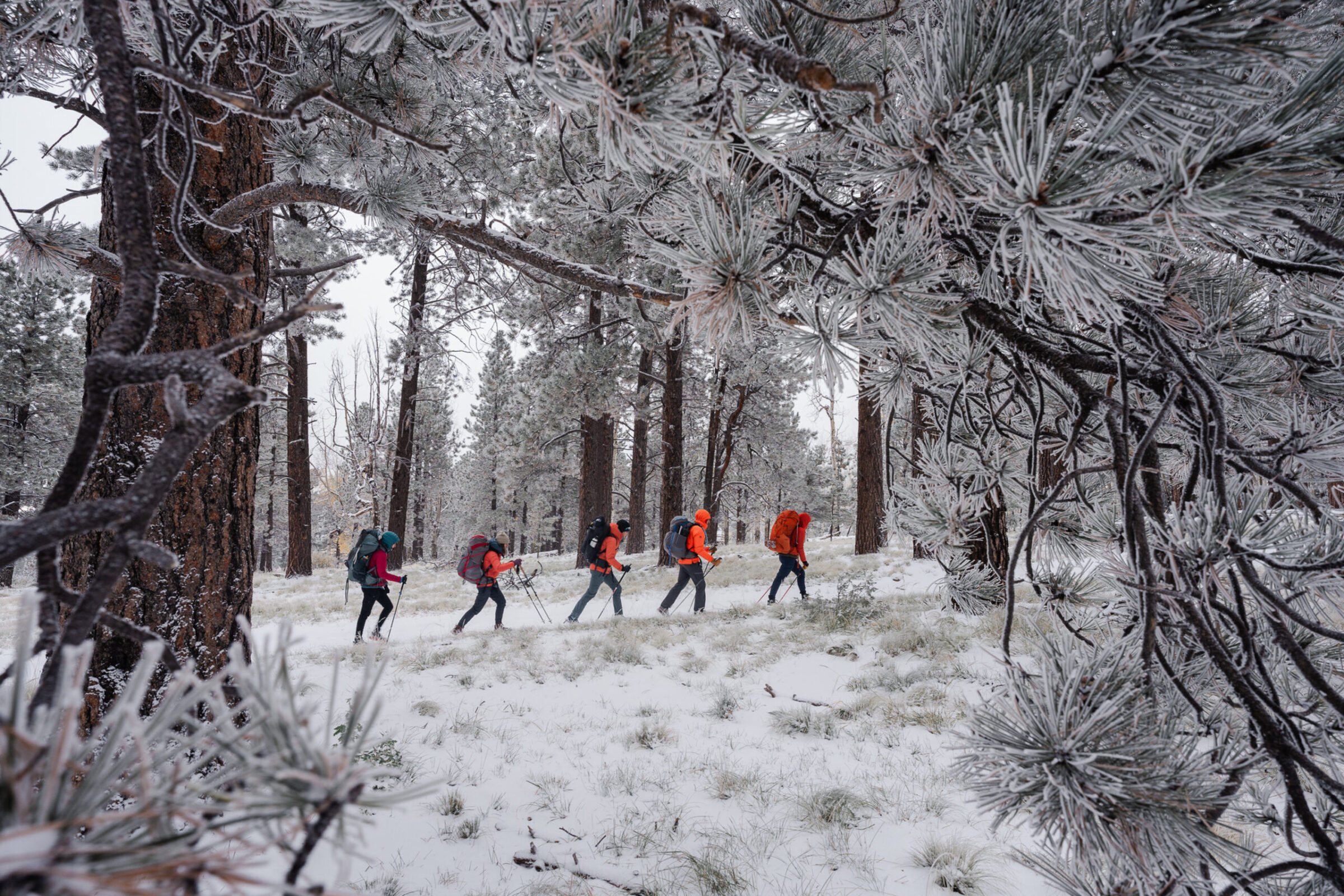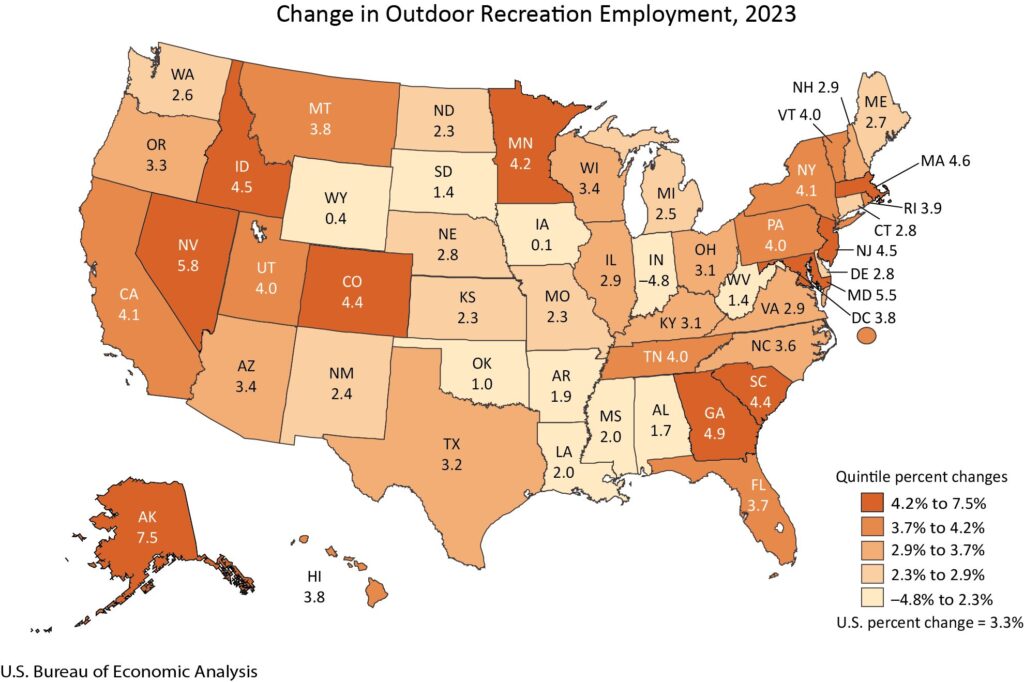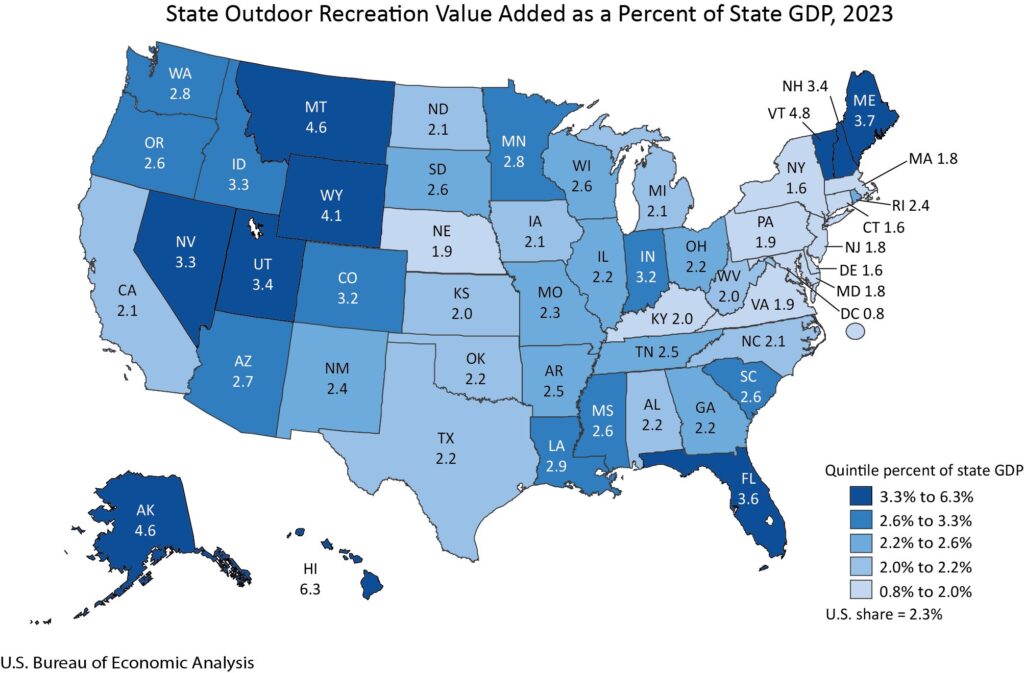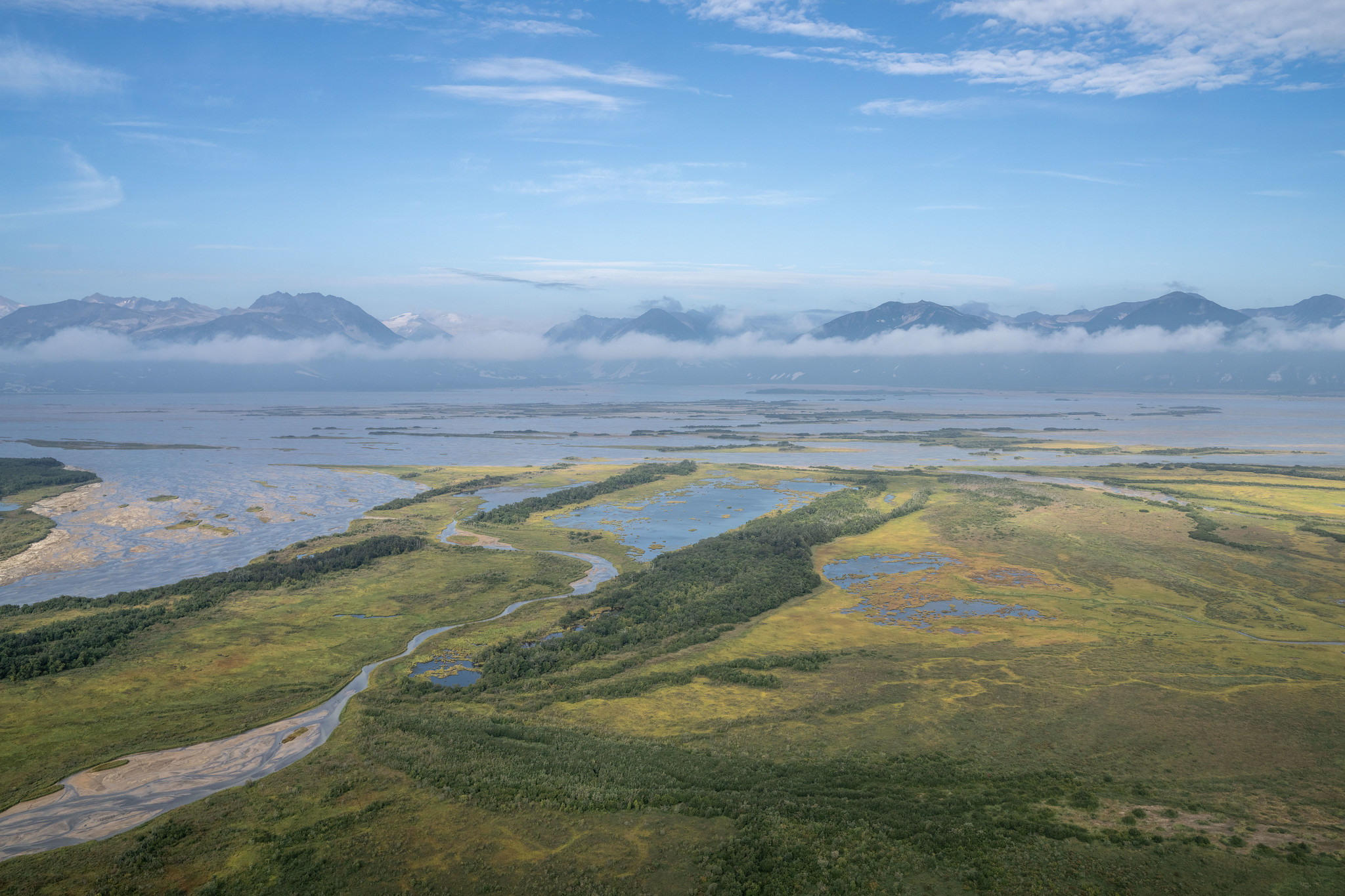

Participation in snow activities increased by 10% in New Mexico between 2022 and 2023.
Photo by Evan Green courtesy of New Mexico Outdoor Recreation Division
Step out onto the planet.
Draw a circle 100 feet round.
Inside the circle are 300 things
nobody understands and,
maybe, nobody’s ever seen.
How many can you find?— Lew Welch, “Hermit Poems,” 1964
It appears more people than ever are stepping out onto the planet to see what they can find.
If at some point this holiday season you find yourself going over the river and through the woods, you might be contributing to a sector that employs 5 million people and attracts $1.2 trillion in consumer spending.
New statistics released last week by the U.S. Bureau of Economic Analysis show the value added of the outdoor recreation economy accounted for 2.3% ($639.5 billion) of current-dollar GDP for the nation in 2023. Among other conclusions and findings:
- Between the two of them, Alaska and Hawaii can attribute nearly 11% of their collective state GDPs to outdoor recreation.
- Indiana outdoor recreation employment decreased by 4.8% but the state — known for its recreational vehicle industry — led the nation in its fastest-growing outdoor pursuit, “RVing,” with a $4.7 billion share of a national Rving economy measured at $26.3 billion in current-dollar value added. That’s $2.2 billion more than Texas and more than twice the total in California.
“Inflation-adjusted (‘real’) GDP for the outdoor recreation economy increased 3.6% in 2023, compared with a 2.9% increase for the overall U.S. economy, reflecting a deceleration from the increase in outdoor recreation of 10.2% in 2022,” the BEA stated. “Real gross output for the outdoor recreation economy increased 3.2%, while outdoor recreation compensation increased 9.0%, and employment increased 3.3%.”
Outdoor recreation employment saw the biggest percentage improvement in Alaska (7.5%), Nevada (5.8%) and Maryland (5.5%), followed by Georgia at 4.9% and New Jersey and Idaho tying at 4.5%.

In terms of value added as a percent of state GDP, Hawaii led at 6.3%, followed by Montana and Alaska at 4.6%; Wyoming at 4.1% and Maine at 3.7%.
Broken out by industry, the stats show that outdoor recreation manufacturing has exploded from $50.9 billion in real-GDP value add in 2013 to $68.8 billion a decade later. In current dollars, it’s more dramatic: $52.6 billion in 2013 to $86.6 billion in 2023. Here are the top 10 states by employment in outdoor recreation manufacturing:
| State | 2023 Jobs |
| 1. Indiana | 33,243 |
| 2.California | 24,316 |
| 3. Texas | 16,996 |
| 4. Georgia | 11,451 |
| 5. Pennsylvania | 11,264 |
| 6. Ohio | 10,576 |
| 7. Florida | 10,112 |
| 8. New York | 8,930 |
| 9. Wisconsin | 8,839 |
| 10. Illinois | 8,313 |
The BEA explains that its statistics are broken down into three general categories: “(1) conventional activities such as bicycling, boating, hiking and hunting, (2) other activities such as gardening and outdoor concerts, and (3) supporting activities such as construction, travel and tourism, local trips and government expenditures.”
But if you sift out all the ancillary and supporting activity such as transportation, lodging, game areas and venues, festivals and retail, what are people actually doing out there with their bodies? By direct outdoor activity, boating and fishing ranked No. 1 with a value added of more than $27.2 billion — more than $7.5 billion more than a decade ago and even beating out the universally popular supporting activity labeled “food and beverages.”
Here are the top 10 by value added in millions of chained (2017 dollars):
| Activity | 2023 Value Added ($M) |
| 1. Boating and fishing | $27,273 |
| 2. Other boating | $19,578 |
| 3. RVing | $19,179 |
| 4. Hunting, shooting & trapping | $11,630 |
| 5. Other outdoor recreation activities1 | $10,446 |
| 6. Motorcycling and ATVing | $10,300 |
| 7. Productive activities (includes gardening) | $9,633 |
| 8. Other conventional air and land activities2 | $8,571 |
| 9. Snow activities | $6,092 |
| 10. Climbing, hiking and tent camping | $6,025 |
1 “Consists of agritourism, augmented reality games, beachgoing, disc golf, hot springs soaking, kite flying, model airplane/rocket/UAV, paintball, photography, stargazing/astronomy, swimming, therapeutic programs, water polo, yard sports.”
2 “Consists of air sports, driving for pleasure, geocaching/orienteering/rock hounding, ice skating, inline skating, land/sand sailing, races, running/walking/jogging, skateboarding, and wildlife watching/birding.”
Boating and fishing was the largest conventional activity in 34 states and the District of Columbia. The states with the largest contributions were Florida ($4.2 billion), California ($3.1 billion), and Texas ($2.8 billion), the BEA said. Snow activities were the largest conventional activity in three states (Colorado, Utah, and Vermont.) “The states with the largest contributions,” said the BEA, “were Colorado ($1.6 billion), California ($692.6 million), and Utah ($643.4 million).”
Reading the two footnotes above offers insights into how seemingly random the act of categorization can be: “Driving for pleasure?”
In voicing enthusiasm for the impact of the overall sector, Kent Ebersole, president of the Outdoor Industry Association (OIA) may have been discounting that particular activity when he said, “OIA led the charge in urging the BEA to track this data, which continues to reveal the profound economic and societal value of human-powered outdoor pursuits.”
The Outdoor Recreation Roundtable chimed in too, saying the data reinforce the need for passage of the EXPLORE Act, passed by the U.S. House of Representatives in April 2024, which the Roundtable says “would help ensure that public lands and recreational spaces remain accessible and well-maintained, with updates in antiquated management policies, boosting the outdoor economy without new costs to taxpayers. As the outdoor recreation economy grows, so does the need for continued investment in public lands and infrastructure. Without updates and improvements, many recreation areas risk falling behind demand. Additionally, retroactively extending the Generalized System of Preferences (GSP) by the end of the year would bring back certainty to the businesses trying to move supply chains out of China and keep their products affordable for consumers.”

The OIA’s Ebersole called the sector “a cornerstone of our nation’s economy.” And as the ORR’s directory of state offices confirms, plenty of states recognize it as the cornerstone of their state economies too.
In 2019 when she took office, New Mexico Gov. Michelle Lujan Grisham identified outdoor recreation as one of nine target industries to grow and diversify New Mexico’s economy, said a release from the state last week. “In April 2019, the governor signed a bill creating the state’s first Office of Outdoor Recreation. Since then, the Outdoor Recreation Division has invested $22.4 million in trails and infrastructure projects and awarded $6.4 million in Outdoor Equity Fund grants, getting more than 83,000 youth outside for transformative, educational experiences.”
The Florida Department of Environmental Protection oversees the Statewide Comprehensive Outdoor Recreation Plan (SCORP), an official document regarding outdoor recreation planning which is produced every five years. “Planning is underway for the 2027-2031 SCORP,” the DEP states on its website. An economic impact report issued in 2017 found that the total economic impact of 35 outdoor recreation activities tracked by SCORP was estimated at $145 billion, including 1.2 million jobs and the generation of nearly $10 billion in tax revenues. Need more granular data? The DEP maintains a searchable database of around 13,000 records of outdoor recreation resources and facilities in the Florida Outdoor Recreation Inventory.
In Alaska, the No. 1 state by year-over-year employment gain, a September release from the National Park Service reported that 3.3 million visitors to the 23 national parks in Alaska spent $1.5 billion in the state in 2023. That spending resulted in 21,274 jobs and had a cumulative benefit to the state economy of $2.3 billion. “Solitude, wilderness and deep human connection await in Alaska’s national parks, and I’m proud to see how the parks are benefiting surrounding communities.” said Sarah Creachbaum, regional director for Alaska parks. — Adam Bruns

Katmai Bay in Katmai National Park and Preserve is part of an array of 23 national parks in Alaska that drew $1.5 billion in visitor spending in 2023.
Photo by Lian Law courtesy of NPS